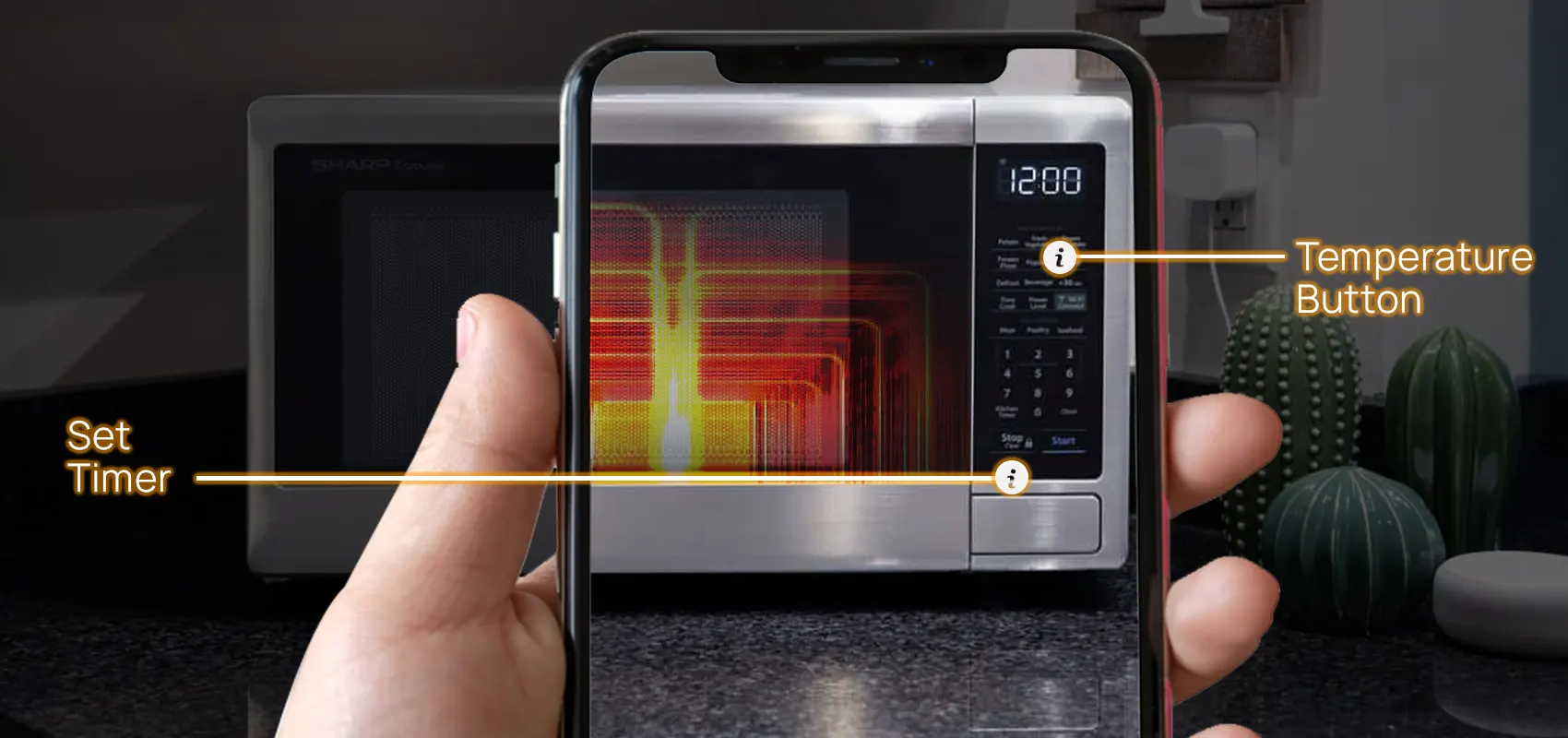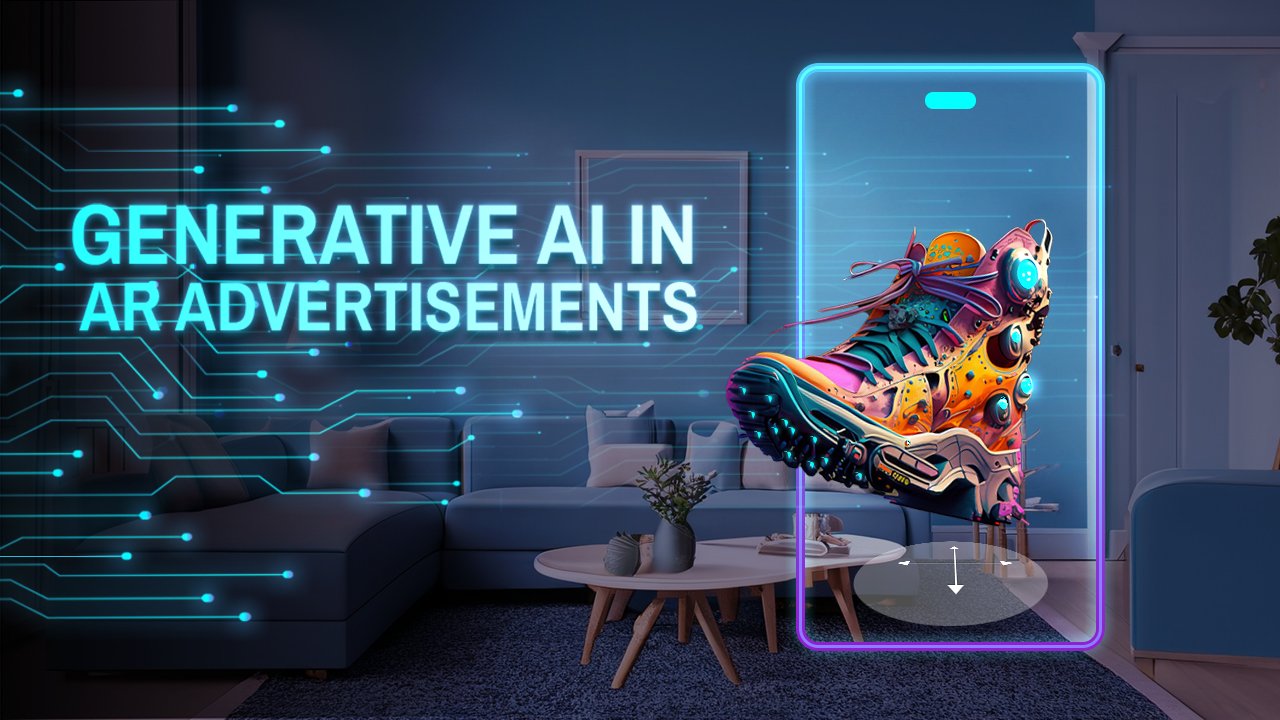Which advancement in online shopping made your life easier?
For me, it was the ability to visualize furniture in real-time that retailers like Ikea and Pepperfry introduced on their websites.
As a person who relies on online shopping more than in-store, this solution made it much simpler for me to decide the best suitable furniture for my home. This is because viewing a product’s 360 helped me visualize it in real life.
This kind of visualization is credited to the amazing technology of Augmented Reality (AR).
So, what exactly is Augmented Reality?
AR refers to experiences in which a real-world environment is enhanced with digital elements such as images, text, and videos. Augmented Reality could be applied to both visuals of the front-facing (selfie) and back-facing (world) cameras.
There are two kinds of AR –
- Native AR which requires downloading an app, and
- WebAR which can be easily created on the browser of any device (such as smartphone and laptop).
By employing Web AR, brands can quickly turn their whole product line into incredibly lifelike digital models that customers can visualize in their real-life environment. This is what we call AR Visualization.
Now that our basics are sorted, let’s dive deeper into all the knows and hows of AR Visualization!
How AR Visualization is simplifying the way we shop
Shopping online can be an alienating experience because it lacks the feel one gets when touching and seeing a product in a brick-and-mortar store. Interacting with a product physically increases customer’s confidence and determines whether they will make that purchase or not.
- At times online shopping leaves the customer unsure of what will fit them or their environment better in person.
- Augmented Reality solves the common struggle to visualize an online product in its actual environment when viewed on the website.
Similarly, many retailers can avail Vossle AR to provide their customers with the luxury of viewing an online product in real life before purchasing it, hence encouraging quick decisions and increasing product sales. This is especially helpful for the ones shopping for sizable products online (like furniture) which is frequently difficult to picture in a real environment.
Customers desire to have a significant emotional connection to the products they purchase. By incorporating AR Visualization, a business is given a blank canvas to offer extra content like recipes, instructions, prizes, and more. Customers can connect with products through this supplemental information before they even buy them.
Let’s look at some advantages of AR Visualization that particularly make this Feature shine!
Notable Benefits of AR Visualization
1. Use AR Visualization to lower products return rate by offering informed purchases
Product returns cost an average loss of about 3.8% in profits per company.
- Implement AR Visualization to offer more informative purchases as visualizing a product in AR is more insightful than a static image or even a video.
- This helps in the combat against high return rates, one of the major issues that eCommerce businesses face. AR does so by enabling customers to make informed purchases as they’re able to interact as well as visualize the product, which in turn helps businesses to increase profitability.
2. Convert visitors into customers by simplifying the shopping experience with AR Visualization
Interacting with products that have AR experiences leads to a 94% higher conversion rate.
- Attracting visitors to your website is crucial, but the main work starts after that. After arriving, you need to capture their attention, urge them to explore products, and ultimately convert them into paying customers.
- AR Visualization increases your website’s ‘stickiness’, meaning that potential customers who may leave immediately after they land on your website are intrigued to stay on the page and interact longer by viewing the products in 3D.
- AR-enabled product experiences provide an immersive and engaging product experience that gives users a better idea of what they are viewing. With AR, people are more likely to convert into buyers. This ensures that new customers will boost your sales and existing customers will make more repeat purchases.
- Consumers are increasingly becoming cynical about claims big companies make regarding their products in their run to be on the top. Providing a detailed product visualization on the website can benefit businesses by creating transparency and providing confidence to the customers by actually showing what they claim.
3. AR Visualization is extremely easy to create and implement in your business
- Implementing web-based AR on any browser is very easy with platforms like Vossle. You simply need to add the generated link or QR code of the WebAR Experience on your webpage.
- Vossle was created with the main purpose to give you the ability to create your own AR Experience in a matter of a few minutes. You’re not required to learn coding nor do you need to download any app. Like its name suggests, WebAR Experiences are created on the web, meaning you can create any experience on your phone or laptop browser.
- You can even easily add a call to action in your Web-based AR Experiences to redirect your customers to a designated page (such as a shopping cart or discount page) after interacting with the experience.
4. Widely preferred by GenZ to simplify online shopping
83% of Gen Z viewers want a worthwhile shopping experience.
- GenZ regards online shopping as not just a transaction but a worthwhile experience. We don’t want the traditional 2D shopping experience anymore since it leaves doubts regarding whether or not a product is right for us. We seek fun, creativity, interaction, and clear communication- everything an AR-enabled 3D visualization offers.
- They particularly search for businesses that appeal to their desire to be innovative, offer an experience rather than just a service, and engage with customers in real-time. Brands can provide this kind of experience by enabling AR Visualization in their products.
Visualizing iPhone 14 Pro in Augmented Reality
- For example, an electronics retailer was seeking an innovative and efficient marketing solution to boost sales of the recently launched Apple devices.
Creating an Augmented Reality-based smartphone visualization experience turned out to be the most convenient and practical solution.
The QR Code for this product visualization experience was printed and put up in the store and on the shopping bags. It even included additional information such as features of the new phone. Sales increased as a result of the new solution.
5. A technology that can be leveraged as an excellent marketing tool
By now, you know that AR has the potential to be exceptionally effective in this ever-growing competition to stand out. Something as unique as AR can serve as your company’s USP and even help you connect to your clientele a lot better.
- Brands strive hard to distinguish their image from other businesses. The ones that integrate cutting-edge technologies like AR with customer experience are not only improving their brand image but also ensuring customers that they care about constantly working on the betterment of their experience.
- Performing market research is crucial to enhancing your marketing strategies and growing your company. Platforms like Vossle enable marketers to easily measure the outreach and customer engagement levels of the AR experience or campaign to make informed decisions.
Vossle’s Inline AR- an innovative way to implement AR Visualization
Imagine your customer is checking out a product on your website and they’re able to instantly visualize it in their home- all without taking any extra steps! Sounds like a complicated process to implement, right? Fret not, Vossle has made it extremely easy for you.
With Vossle’s Inline AR, users can experience Augmented Reality while they are scrolling through a website. Any website owner can embed 3D AR experiences on their web pages to offer seamless visualization of any product in real-settings.
Inline AR eliminates the additional steps users typically take such as scanning a QR Code. They can simply come across any Inline AR Experience while scrolling on the web and start engaging with it.
When anyone comes across something as unique as the Inline AR Feature on any website, they tend to engage more with the AR Experience and spend a longer time interacting with that website’s content.
The rise of AR among internet consumers
Like me, countless others have found AR Features such as Visualization and Virtual Try-on a boon to online shopping. Don’t take it from me, the figures speak for themselves!
- 71% of consumers say they would shop more often if they used AR.
- 61% of consumers say they prefer retailers with AR experiences.
In the coming years, more and more people will be adopting AR. In fact, around 75% of the world’s population and nearly all smartphone users will be undergoing AR experience frequently by 2025.
Credit goes to the fact that more platforms such as Vossle are emerging that make utilizing AR easy and efficient. People can now create AR experiences in just a few minutes, without having to install any application, or even have any coding experience.
The promising outcome of implementing AR in your business
Including AR components such as Visualization and Virtual Try-on plays a crucial part in boosting sales in this age of technology and rigorous competition.
Marketers can unlock a wide array of opportunities as AR has become more accessible instead of undervaluing the potential of this powerful technology.
Augmented Reality is one of the most cost-efficient technologies. If you adopt AR, worrying about large inventories, the cost of creating the goods, the capital to set up a physical store, and so many more such problems will be a thing of the past.
No wonder this technology has been embraced by several industries to strengthen their brand image. This includes industries such as real estate, education, and eCommerce. The list goes on and on.



















